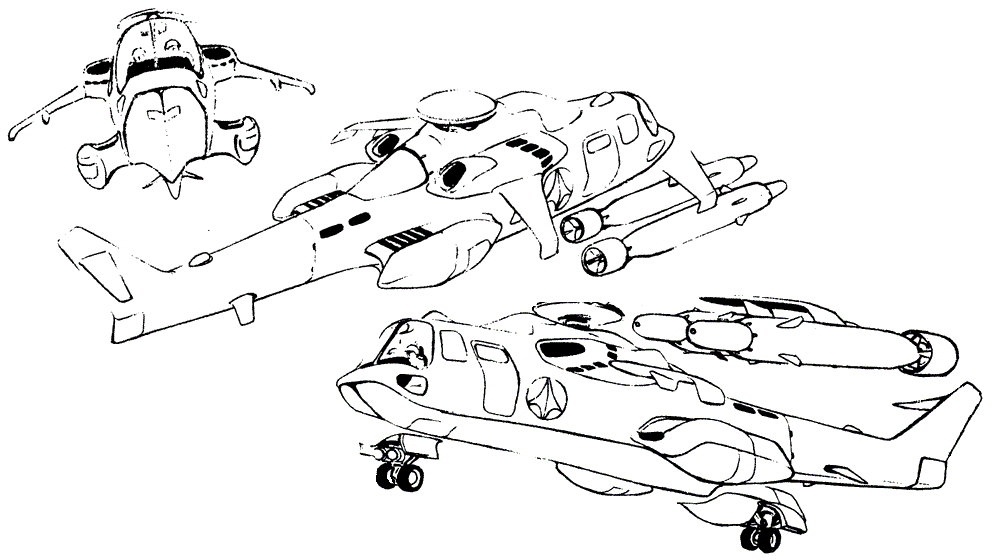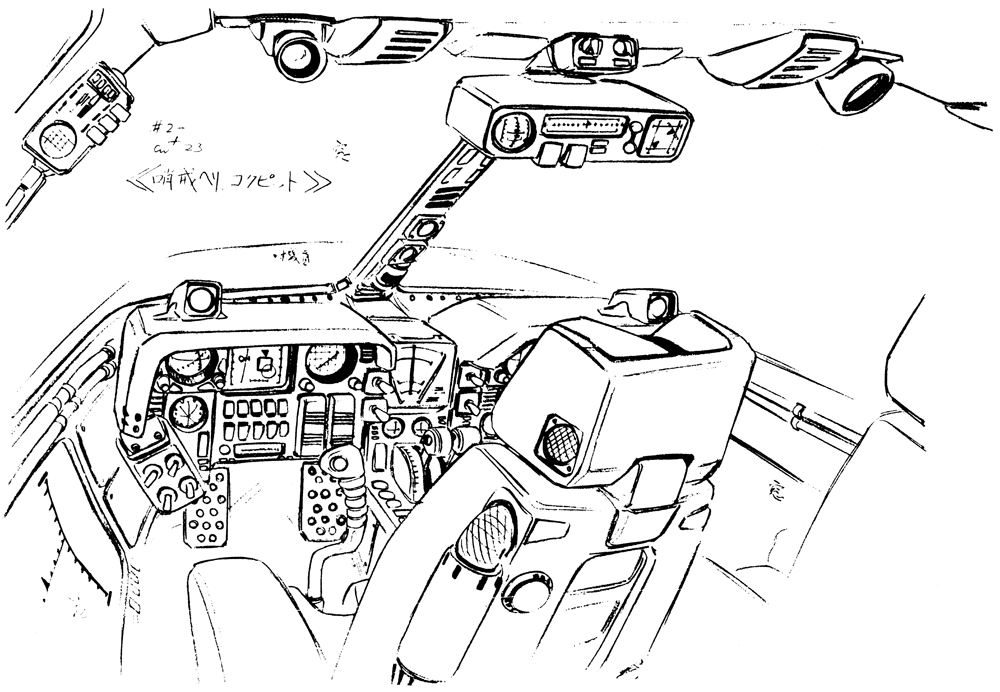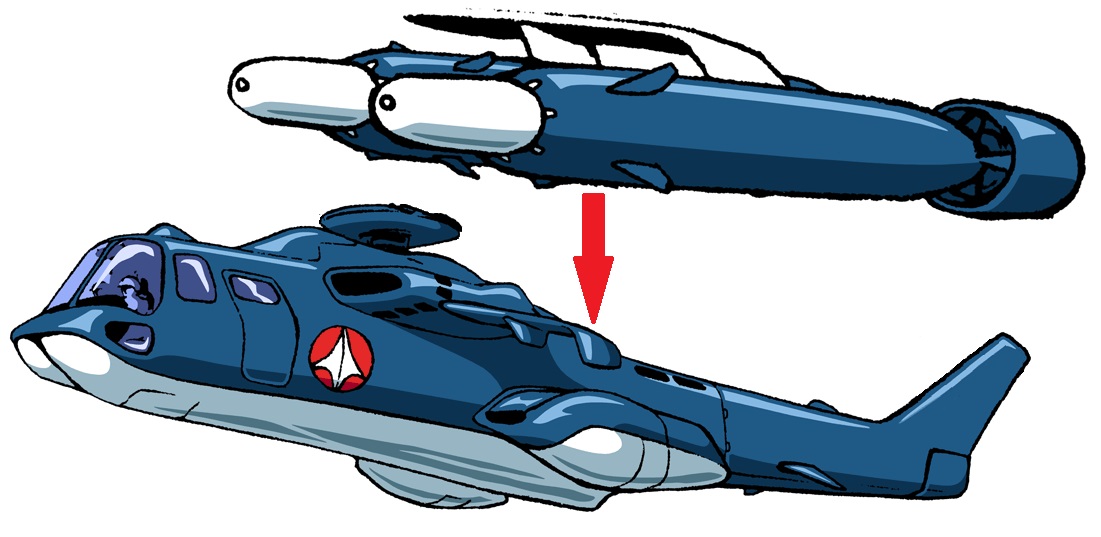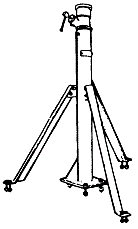
United Nations
Robotech Defense Forces. | S/CH-7 SkyMaster. | 
United Nations
Robotech Defense Forces. |
|---|
When the Robotech Defense Forces were First formed, they were supposed to develop entirely new equipment specifically to their needs, and independent of any member-state of the United Nations Security Council; Unfortunately,  | | S/CH-7 SkyMaster Line Drawing. |
|---|
 | | Cockpit Layout. |
|---|
 | | S/CH-7 SkyMaster Of the Terran Defense Authority (Terran RDF). |
|---|
practical matters of obtaining equipment in a timely fashion prevented the "highest execution" of this ideal, and the RDF was forced to use some equipment provided by various countries on a lend-lease basis. One was the Russian Mi-81, intended to replace the Mi-8, -17, and -24 fleets. With the entry of Russia into the UEG, the Mi-81 was "offered" on an extended lease basis (while Russian engineers worked to develop an even better design, which they had hoped would be a "VTOL fighter plane" that didn't make it off the drawing boards). The helicopter was accepted in RDF service as the EH-304 Sea Sergeant cargo/ASW helicopter.The SDF-001 MACROSS had 20 EH-304's assigned; In the desperate efforts to recover Macross City's residents and "anything of mat'eri'el assistance" from the city, another 90 or so were recovered (mostly from ships that were at Macross Island at the time). This period was unfortunately marked with an attitude of "grab first, sort later," and the MACROSS took onboard a lot of stuff that simply wasn't worth the trouble (for example, over 100 each of Falcon and MiG-31 Karyovin/UF-14 Freedom fighters, of which "many" but not most of the later were converted to crude unmanned drone/missiles, of the later absolutely nothing of value could be done and were rendered down for their components and materials, and "dozens" of American-supplied Comanchero Attack Helicopters, which also proved "of dubious use" though a few were refitted for space use). The Sea Seargeant managed to avoid much of this in service as Search And Rescue (SAR) by such units as VPB-6 (the "T'sentraedi Patrol"). After the First liberation of Earth, the Robotech Expeditionary Forces were forced to press some into service (mostly in southern Africa and Austrailia) for basic, short-range troop and equipment transportation, and thus the Sea Seargeants were spared the wrecking yard for the time being. After the final reconciliation with the Invid, the 'old' style Sea Sergeant were kept in service as part of the reconstruction efforts, though the airframes were replaced over time. (One of the reasons the Sea Sergeants were selected was that the equipment necessary to build them was readily to hand; each continent actually had EUG-funded factories that were ready for operations minus some minor repairs, such as replacing blown fuses. One, an eastern North America factory, was occupied by vagrants that 1138TH MP had to eject, but this was the worst of the lot.)The S/CH-7 SkyMaster is the one of two types of helicopters designed SPECIFICALLY for space combat; The Sea Seargeants were "melded" with the Comanchero to form a front-line attack transport. Amongst other changes, the Comanchero's nose gun was installed along with the triple hardpoint wings, increasing available firepower. A more recent upgrade is the installation of L-02 rail launchers. (Curiously, the Blackhawk is slated to not receive this upgrade, indicating that system's end of service is being 'contemplated.') Spacy Special Forces use them to ferry over to enemy vessels to take control of them (often opposed control; Spacy SpecFor take enemy vessels, Marines re-take Spacy vessels that enemy forces have taken). Now reasonably heavily armed, the crafts' main purpose is to deliver troops and supply support afterwards; After the defeat of the Atorian Empire, the integration of grav pod technology allowed them to be improved upon significantly. They are now faster, carry a larger passenger/cargo load, and are safer. They can also be used in space without restriction on the craft (the crew must wear a spacesuit if the craft is opened up at all).Name: SkyMasterModel Type: Assault HelicopterCrew: 2.Passengers: Up to 24 troops can be carried if necessary.MDC By Location: |
Fuselage-
Cockpit-
Thruster Nozzles (2)-
Grav Pod-
Side Passengers Doors (2)- | 250
200
200 each
50
150 each | Rear Assault Door-
Weapons Pylons (2)-
Tail Boom-
Tail Rudder-
| 200
100 each
200
200
|
| Speed and Statistical Data: |
Max Speed: 300 knots
Range: 5,000 miles
On The Ground: 10 MPH
Range On The Ground: 1 miles.
On Water: 0 knots; Can land and take off, but not move, just float.
Length: 60 feet (3 feet longer than original specs).
Width: 10 feet
Height: 10 feet.
Weight: 4,900 lbs. | Cargo: Passengers and their equipment.
Power System: Twin SRK-4150 Dual-Phase Hydro-cell Engines; Output: 5,200hp.
Flight Systems: Grav Pods and Dual Phase Hydro-Cell Scramjets.
Cost and Availability: 25,000credit new and unarmed; Every 4 months another batch of 10 becomes available per factory.
Black Market Cost and Availability: An equivalent system would cost between 20,000 and 250,000credit, depending on buyer and seller; Fairly common.
|
| Weapons Systems: |
|---|
1. TM-5 Plasma Launcher: A basic, ball-turret mounted plasma launcher. The weapon itself is based on the T'sentraedi plasma launcher, but has FAR superior range (due to a greater number or primer rings). The weapon is mounted on the nose.
Purpose: Defense/Anti-Infantry/Power Armor
MD: 5D6
Rate of Fire: Standard; Pilot or copilot can automatically use this weapon.
Range: 6,000 feet
Payload: Unlimited
 2. Door Gunners: Each side of the helicopter has a heavy weapons mounting pintle; Any type can be used, though heavy energy weapons or the RG-41 rotary gun are preferred for these positions. Generally used for anti-power armor work. An E-cable provides unlimited capacity to energy weapons. Most such guns are on butterfly grips, though some remain on standard grips with shoulder stocks (to improve accuracy). Standard versions consist of the M-6 pedestal mount, though a 3-point sling mount for medium machineguns and similar weapons is also available, which "can" (has) but should not be used to lean outside the helicopter to the point the gunner can actually fire UNDER the helicopter. For projectile-based weapons, around 1,000-5,000 rounds are typically carried (depending on size). (Depicted is an M-31c, which differs in that is has three legs.) 2. Door Gunners: Each side of the helicopter has a heavy weapons mounting pintle; Any type can be used, though heavy energy weapons or the RG-41 rotary gun are preferred for these positions. Generally used for anti-power armor work. An E-cable provides unlimited capacity to energy weapons. Most such guns are on butterfly grips, though some remain on standard grips with shoulder stocks (to improve accuracy). Standard versions consist of the M-6 pedestal mount, though a 3-point sling mount for medium machineguns and similar weapons is also available, which "can" (has) but should not be used to lean outside the helicopter to the point the gunner can actually fire UNDER the helicopter. For projectile-based weapons, around 1,000-5,000 rounds are typically carried (depending on size). (Depicted is an M-31c, which differs in that is has three legs.)
3. L-02a Rail Launcher: Part of the 2481 Upgrade program, the LIMA-02 (said "LEE-MA zero too") is fed from a 100-round magazine. The system is radar controlled and designed for Micro-Missiles.
Purpose: Breaching Hulls.
Damage and Range: Varies by type used.
Rate Of Fire: Per gunner's attacks per melee.
Payload: 100 micro-missiles.
Bonus: No bonus on this platform.
| 4. Wing Pylon Mounted weapons: The Sky Master can carry up to 3 types of weapons on its 6 wing pylons. |
A) TM-12 Fuel Pod: Essentially a modified version of the M-11 Torpedo Pod. In this case, however, it is used as a fuel pod to double the normal range of the craft.
B) Type M-7 Rocket Launcher: 24 2-inch rocket tubes in 12 rows of 4 each. Each rocket tube has 4 rockets.
Purpose: Heavy Assault
MD: Each rocket does 2D6 MD
Rate of Fire: Volleys of 6 or 12 times pilots attacks per melee.
Range: 12,000 feet
Payload: 96 per pod. Up to 6 pods can be carried.
C) M-11 Torpedo Pod: An ASW torpedo pod. Carries the Mk-82 Airborne Torpedo, essentially a modified version of the Mk-81 Submarine Launched Torpedo. The initial launch is by a nothing so complicated as releasing it from the latches that hold it to the pylon. The on board hydro-cell motor then takes over as soon as the torpedo splashes. Each pod hold 3 Mk-82's.
Purpose: Offensive/Anti-Ship
MD: 4D6 times 10 per torpedo
Blast Radius: 40 feet
Maximum Range: 80 miles
Minimum Range: 5 miles
Rate of Fire: 1 torpedo per pilots attacks per melee.
Payload: Each pod holds 3 Mk-82's.
D) TM-9 Fixed Autocannon: A pair of fixed-forward autocannons; Most helicopters carry these units in pairs on the ends of their weapons pylons. Some pilots elect to use only this weapon, carrying up to 6; Others only carry 1, and use their remaining mounts for rockets and other weapons.
MD: 1D4 times 10 per 40 round burst (can only fire bursts).
Rate of Fire: Per Gunner's attacks per melee.
Range: 9,000 feet.
Payload: 600 per pod.
E) External MRM launchers (4): Mainly for shooting down hostile aircraft, though are excellent for shooting down MRM's and LRM's.
Primary Purpose: Anti-Aircraft
Secondary Purpose: Anti-LRM.
Damage: Varies by type used.
Rate Of Fire: Volleys of 1, 2, 3, or 4 per pilots attacks per melee.
Effective Range: Varies by type used.
Payload: 32 (4 per launcher, 6 pods per wing).
| G) A-11/a Anti-Radiation Pod: A radar and other detection system jammer.
Effect: While active, enemy radar will have a "wash" effect, where a large, highly unstable cloud of radar paint will appear. An experienced (5ᵗʰ level and above) radar operator can SOMETIMES use the flow of the wash to narrow down the source of the jamming, but typically this does little good. NOTE: This IS a form of radar signal, and can therefore by tracked by some ESM systems (-10%).
H) A-11/v Radiation Detector Pod: This pod passively detects various types of Radiation, most importantly radio signals (for eavesdropping).
I) C-441 Canister Pod: Basically a hollowed out version of the M-7 pod, used to drop highly sensitive and extensive messages. A nose-mounted device using GPS or laser detection guides the pod to within ⅛ of an inch of the intended target.
D) A-11 Tracker Pod: This simple 63' pod is an expanded version of the XTNDR RADAR/Radio Antenna Extender used on almost all UGC Destroids; The A-11 is a 25 lb. pod, released to fly independently within a 100 feet area of the SkyMaster. A laser communications system relays the data collected from the A-11 Pod to the parent craft or to an EC-66. Because it is so much larger than the XTNDR Pod it can have a grav pod without interfering with sensors.MDC By Location:Pod: 70Full-Force Barrier Field: 100Grav Pod: 50
Effect: Effectively serves as a second EC-66, giving a second viewing area, doubling or tripling sensor area 3 to 4 times (or defeats other penalties in a 5 mile area). The A-11 has all the same sensors as an EC-66, except MRI and radar; The radar is a combat grade radar, with a range of 20 miles and tracking ability of 50 targets and an 80% reliability (10% against unfriendly stealthed vehicles). This system also gives a second view angle, so unfriendly stealthed vehicles can't hide AS easily (roll against the plane AND any pods in the air at +10% each). Due to the proximity of grav pods, MRI could not be installed. |
 |
| A C-441 Canister Pod (indistinguishable from TM-12 Fuel Pod, M-11 Torpedo Pod, and A-11/a Anti-Rad/A-11/v Rad Detector Pods). |
|---|
| Features: |
- ESM: Radar Detector. Passively detects other radars being operated.
- Radar: Combat grade radar. Range 100 miles, can track up to 50 individual targets. 95% reliability (24% against unfriendly stealthed vehicles).
- AJP: Active Jamming Pod. Causes-25% to detection but when it is active, other vehicles/bases can detect that it is jamming, and some missiles will home in on jamming signals. Jamming also causes a -4 penalty to all radar guided weapons. The jamming pod is only mounted inside the port taileron.
- AMC/FD (2): Anti-Missile Chaff/Flare Dispensers. Actually launches a glob of burning magnesium/aluminum alloy to confuse both radar AND heat sensory systems. Fires off 04 chaff/flares each time it is activated. The system is KNOWN to work on all KNOWN radar and infrared systems, but concerns continue that somewhere out there their MIGHT be a system that will be totally unaffected by the system. Reduce effects by 20% against smart missiles (add +20% to rolls for smart missiles).
- Effect:
- 01-50 Enemy missile or missile volley detonates in chaff cloud- Missiles are all destroyed.
- 51-75 Enemy missile or missile volley loses track of real target and veers away in wrong direction (may lock onto another target).
- 76-00 No effect, missile is still on target.
- Also note that the chaff cloud will also blind nearby heat sensors (and optically based sensors at night) for 1 melee. They will suffer the following penalties: Reduce melee attacks/actions, and combat bonuses by half.
- Duration: 1D4 melee rounds.
- Payload: 60 chaff/flares. Each time the system is engaged, the system fires off 04 chaff/flares.
- Blue Force Tracker: Identifies friend from foe. Overlays the information on both the radar and HUD, ensuring that friendly forces are not accidentally targeted.
- GPS: Standard tracking device. Ties into the Blue Force Tracker.
| - Anti-Jamming System: Reduces Electronics Countermeasure by 3/4 (decrease skill level appropriately).
- HUD: Displays maps, radar, targeting information, and any OTHER information the useer wants directly in front of the user.
- FLIR/SLIR: Forward and Side Looking Infrared. Allows pilot to get visuals on targets at night.
- Virtual Map: Displays a continuously-updating map of local terrain for the pilot. Takes data from and gives data to other friendly units in the area. Effective land navigation of 85% as updates come. Good to 500 miles. Specific range can be adjusted in 1 mile increments.
- Loudspeaker: Amplifies voice 1 to 100 times. 100 feet in normal crowds.
- Video Camera: Records from the HUD. 50 hours of recording available.
- Full Range Optic Sensory Suite: Infrared, ultra violet, Magnification, night sight, color filters, thermal imager. Range is about 200 miles for MOST sensors.
- Survival Pack: A pack of simpler emergency survival supplies: Pup tent, sleeping bag, black light, GPS, First aid kit (bandages, gauze, bandage tape, pads, antiseptic/analgesic), plasma torch (for small repairs and starting fires), repair kit (with MDC Repair Spray), sewing kit (a small spool of thread and 5 needles), 7 star flares (250 foot apogee), 100 feet of black or brown parachute cord (150 lbs tensile strength; This is in addition to several hundred feet from their parachute itself), 2-5 days rations, 2 gallons water, water purification kit (good for about 10 gallons), manual-inflating liferaft (for at-sea abandonment), self-inflating lifevest (15# buoyancy). The liferaft can also double as a Pup Tent if so desired (though most pilots prefer to use a parachute for that, if anything, due to the fact that it is easier to hide). NOTE: Because the craft does not have rotors, it can not auto rotate for a crash landing.
- Smoke Dispensers (8): Throws out smoke flares capable of covering a 503' foot area. Special chemicals in the smoke obscures IR and heat sensors, and defeats visual tracking of the vehicle. Note that it DOESN'T make the vehicle invisible, but simply negates ALL bonuses to strike.
|
Combat Bonuses from S/CH-7 SkyMaster Helicopter Combat Elite:- 1 additional attack per melee.
- One additional Attack Per melee at levels 3, 6, and 9 with any additional bonuses for the pilot.
- +2 Initiative.
- +2 Strike.
- +4 Dodge.
|